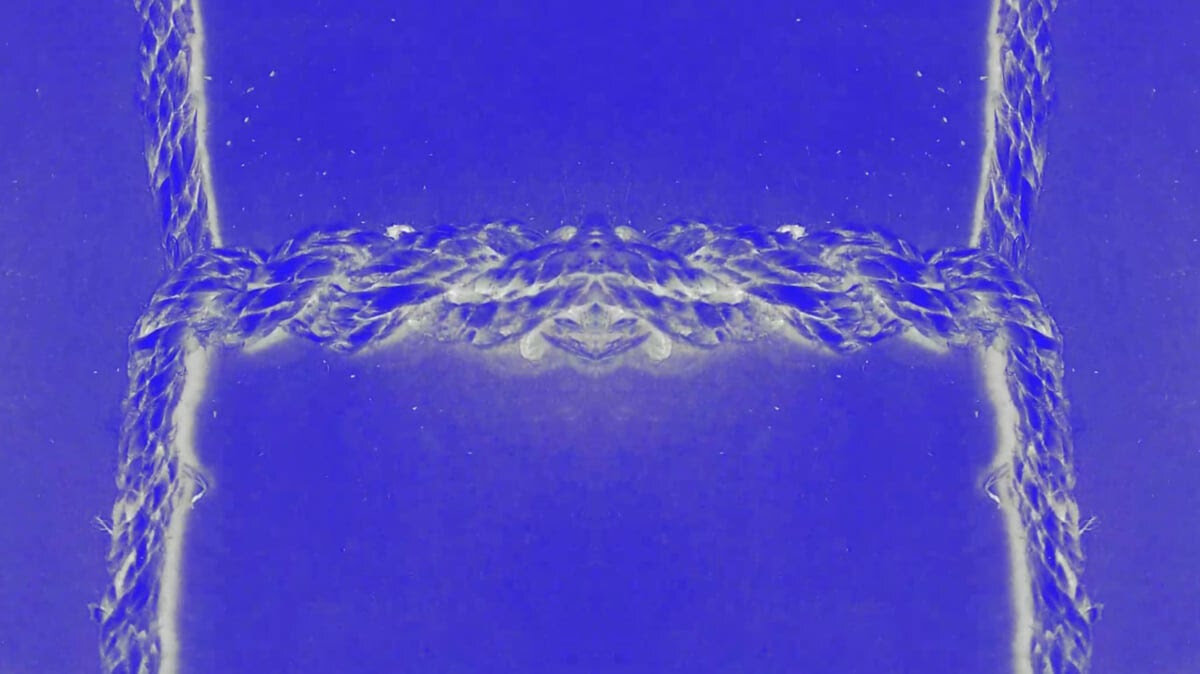IRISIRIS is a set of looping online videos that corresponds to the eight phases of Eye Movement Desensitization and Reprocessing (EMDR) treatment. EMDR focuses on reprogramming the brain's response to a traumatic event, changing how the event is stored, and reducing and eliminating problematic symptoms. By repetitively crossing the brain's hemisphere with sound and images, EMDR attempts to heal and reform neural pathways formed by the event.
The eight videos in IRISIRIS use sound and imagery that are symmetrical and hypnotic: the sound pans from ear to ear, and the mirrored imagery moves from eye to eye, crossing and recrossing the brain's center. Although the videos follow the eight phases of EMDR, they can be viewed in or out of order, with or without sound.
This project began in quarantine. In isolation, I started processing my father's sudden death anew, cut off from the coping strategies and routines that have allowed me to avoid processing the event. I sought to make space for myself, to invite healing by developing more positive self associations with the event. I hope that isolated viewers can use the videos to make space to examine their own traumatic events and the language and tools they use to process them.
*Created with support from the Jack Straw New Media Gallery residency.
IRISIRIS
A critical response by Julia Greenway
Julia Freeman’s IRISIRIS deconstructs personal healing across objects and soundscapes through a series of looping video works. Employing the eight stages of EMDR, a visual and auditory therapy in which a traumatic memory is targeted by triggering the biological mechanisms of Rapid Eye Movement (REM), the work takes on a dream-like state. By moving a hand across the client’s field of vision, from left eye to right, right eye to left, EMDR therapy brings forward internal associations to begin a restructuring of memory; allowing the individual’s wounds to not only heal but transform.
Across the multiple video works, objects are visually mirrored to enact an ocular symmetry. Identifiable yet abstracted rope, peonies, and daisy chains take on an otherworldly quality as if plucked from a dream. Set within a complex soundscape, panning between left and right, forward and back, Freeman examines the auditory impact of processed trauma. From "Suo Gân" notes sung in Empire of the Sun to her son Eris’s first recorded heartbeat, the artist weaves and layers her acoustic histories as a methodology in healing through one’s enacted memories.
Author Marianne Hirsch established the term “postmemory” in order to describe the impact of personal, collective, and cultural trauma carried by the “generation after.” A connection to the past that is mediated “not by recall but by imaginative investment, projection, and creation.” In reflecting on the loss of her father, Freeman evokes familial histories to produce an audiovisual representation of what Hirsch defines as the transmission of memory through projection, object, and narrative. Phase 1: The Event recounts the familial death through a Rorschach of tangled iris bulbs from her father’s garden as whispers, chimes, and heartbeats overlay one another in a dark yet ceremonious meditation, an acknowledgment of the artist’s grief.
Looping infinitely like a never-ending hallucination, Freeman embarks on a journey of healing throughout the remaining seven video works. In Phase 4: Desensitization, a rope is tightly wound and uncoiled in a gesture of “processing distributing emotions and sensations.” In Phase 5: Installation, a positive cognition is presented through the entwining of hands in the formation of a familial unit. By Phase 7: Closure, a blooming iris flutters to Eris splashing in the bath. “My dad loved irises,” Freeman states. “It took his death for me to process that I was capable of giving and receiving love, creating the emotional space for me to have my son.”
Eris is Freeman’s restoration. From the recording of his ripped drawings in Phase 3: Assessment to playing the piano and laughing in the conclusive Phase 8: Reevaluation, his story as her “rainbow child” fills the void of loss. IRISIRIS entangles and layers the artist’s father and her child, not replacing one with the other, but celebrating their connectivity through her collected memories and corporeality. The artist’s navigation of a trauma enacted through an eight-stage therapeutic dream-like state is an offering of familial archive, one that connects Eris to his grandfather: a generational inheritance of memory.
“What is EMDR?” EMDR Institute, Inc. https://www.emdr.com/what-is-emdr/. Accessed 19 July 2020.
“Postmemory” Postmemory.net. https://www.postmemory.net/. Accessed 20 July 2020.
Julia Greenway is an independent curator currently based in London.







